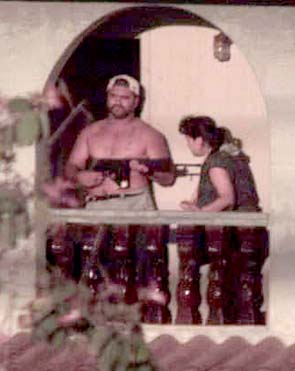

Lawmakers urged Brain-damaged crystal methamphetamine (ice) users should be in prison where they can't hurt anyone, says City Prosecutor Peter Carlisle.
to battle ‘ice’ problem
Long-term treatment
and prevention are needed,
advocates sayBy Helen Altonn
haltonn@starbulletin.com"When their brain is already damaged, isolate them, incapacitate them, then treat them," he told four legislative committees yesterday. "It is not acceptable social policy to have them running around."
Carlisle urged lawmakers to allow drug testing of students to identify those who use ice and give them early treatment before they get into trouble.
The Honolulu prosecutor and others involved with treating ice addicts described the depth of the ice problem in Hawaii to state House and Senate Health and Judiciary committee members, and encouraged them to support efforts to prevent ice use and provide more treatment to addicts.

|
Carlisle cited the cases of Frank Janto and Wayman Kaua. Both men had been in prison and were supposedly treated for substance abuse. Yet, he pointed out, Janto beat 59-year-old Bongak "Jackie" Koja to death in Wahiawa in 1997, while Kaua held two women hostage, fired shots at a private school and pointed a rifle at his wife during a standoff with police in Pacific Palisades in 1998. Both had been on drugs.
"People wonder why police are involved in so many shootings -- Welcome to the 'ice' age in Hawaii," he said.
Legislature Directory
Legislature Bills & Hawaii Revised Statutes
Dr. Barry Carlton, chief of psychiatry at Queen's Medical Center and University of Hawaii psychiatry professor, said a child who tests for methamphetamine "almost certainly is heading for trouble."
Intervention is needed because methamphetamine is too addictive, he said.
People who use ice "are playing roulette with their brain," he said, pointing out kidneys and other organs and muscle also are damaged.
"Young people are walking around with old peoples' hearts," he said.
Carlton said some addicts will recover with treatment if they don't use the drug for six months to a year, while others may have long-term damage.
Elaine Wilson, chief of the state Alcohol and Drug Abuse Division, said prevention should involve improving "protective factors," which would reduce "risk factors" linked with substance abuse.
East and West Hawaii have the highest percentage of children at risk because of readily available drugs, or parental, community or school problems, she said. Kauai and Pearl Harbor have a lot of protective factors and are lower in substance abuse, she said.
M.P. (Andy) Anderson, chief executive officer of Hina Mauka, and Larry Williams, director of the Salvation Army Addiction Treatment Services, emphasized the need for more treatment resources.
They said addiction can be successfully treated, but it's a long-term process marked by relapses, and they can only provide short-term treatment.
The prisons offer an opportunity for long-term treatment, but it must be followed with continuing care, housing and employment in the community, they said.
Williams said that most drug abusers who need help aren't criminals and shouldn't have to be arrested or go to prison to receive treatment.
Anderson said school-based programs "are vital to the community because that is our future." His agency operates 12 school-based programs for about 600 adolescents.
Barbara Mathews, vice president for patient care at The Queen's Medical Center, said the hospital lost nearly $5 million per year in the past two years in behavioral health services for patients with drug problems.
In 2001, the hospital admitted a total of 6,554 people for substance abuse, including 2,089 for amphetamines, a 77.8 percent increase in five years. Admissions for cocaine fell 33.5 percent, to 360 in 2001 from 541 in 1997.
Diane Chadwick, representing the North Hawaii Drug Free Coalition, and Jeannette K. Martin Oliver, with Five Mountains Hawaii, described how residents there formed coalitions and task forces to respond to the ice plague.
They succeeded in getting legislative funding for a therapeutic facility and are talking about "clean and sober houses" for support after recovery, Chadwick said.
Among top recommendations at a "meth summit" were expansion of police efforts, more youth activities, increased family education and training for rehab personnel.
"North Hawaii has the spirit and will to become a model for the rest of the nation," Oliver said.
Lt. Gov. James "Duke" Aiona, among those in the audience at the Capitol auditorium, said: "I'm really anxious to just get going on this."